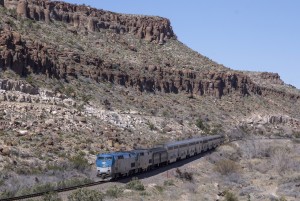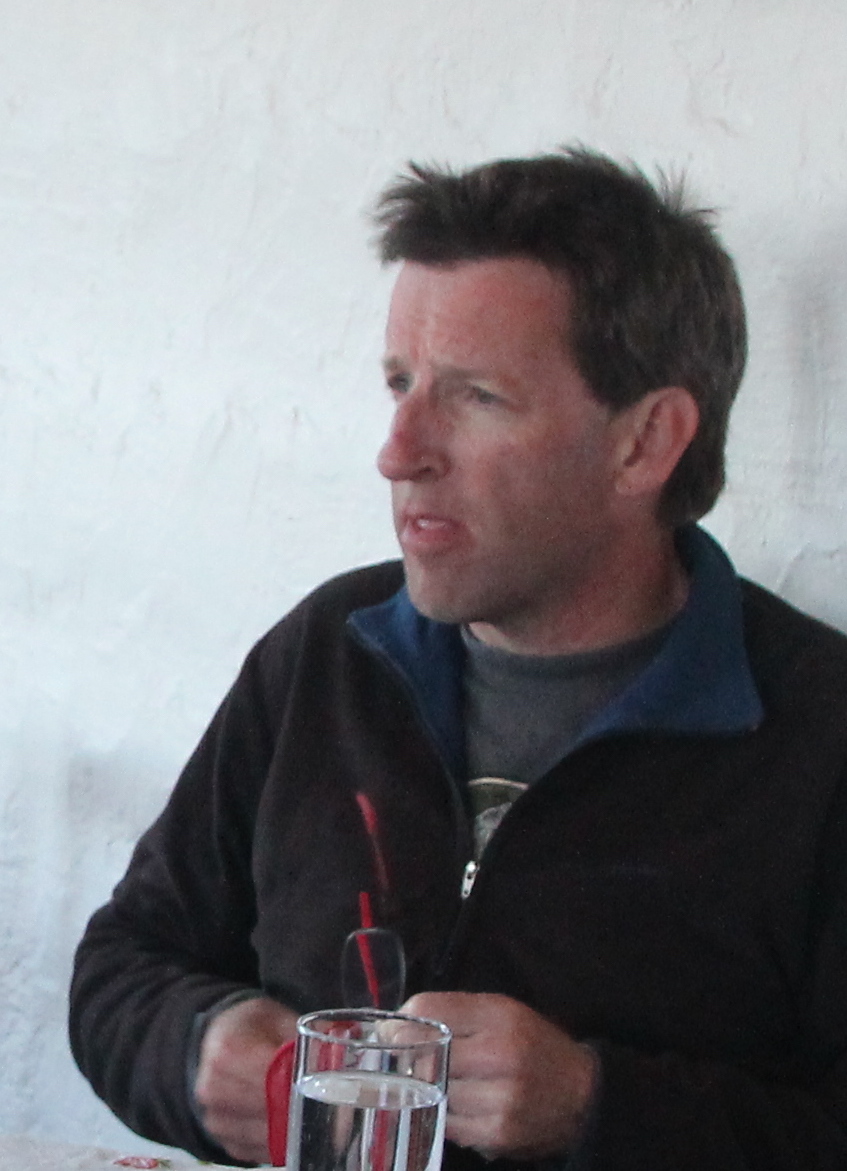 Toot—toooot goes the whistle every night, a clean repeat that after you’ve heard it a few times ever after has to be a pair, just like Romeo and Juliet, or peanut butter and jelly. The twin tones echo a few times off Cherry Hill and Mars Hill, fading into the background hum of the city just before the sound of the train itself comes into earshot.
Toot—toooot goes the whistle every night, a clean repeat that after you’ve heard it a few times ever after has to be a pair, just like Romeo and Juliet, or peanut butter and jelly. The twin tones echo a few times off Cherry Hill and Mars Hill, fading into the background hum of the city just before the sound of the train itself comes into earshot.
A minute later there it comes, the two laboring diesels—assuming they’re both working, even in this era of chronic budget cuts—and the streak of cars behind, a blur of lights that always reminds me of an ocean liner at night, some vanished era of dressing for dinner and onboard romance.
It’s the Southwest Chief, just leaving from its evening stop in Flagstaff, on its way from Chicago and Kansas City and Albuquerque to Williams and Kingman and points west. Flagstaff is a smoke stop, if you’re keeping track, meaning that for its 15 minutes here a small community of the addicted congregates on the platform, sharing where-you-from tales of destinations, family gatherings, jobs held and lost.
As a nonsmoker who likes to take the train I’ve always envied the easy camaraderie of the smokers, but the truth is it doesn’t matter, for riding on America’s faded long-distance trains is a great way to not only see the country but to meet its residents. Off the train I have talked to a lot of people who think that the train is a nutty choice—33 hours to Chicago? Don’t you have anything better to do with that time? Why don’t you fly?—but on the train the trip has its own logic, and it’s self-evident that it’s a good way to go.
There are, for starters, passengers you never see on an airplane. Almost always, there are Amish or Mennonites, beautiful people unburdened by electronica who sit in family groups over at the next table in the lounge car, speaking a language that remains just tantalizingly out of reach. There are well-coiffed retirees who can tell you about their train trips across Canada or Sweden, and often a smattering of foreign tourists.
But mostly there are regular folks: people of all races who simply don’t like to fly or who are well aware that the usual price for a long-distance coach seat runs about two-thirds what the cheapest airfare does.
Even in our screen-dominated era we all sit together, looking out at the scenery: northern New Mexico is a beautiful rugged land as it slowly unspools outside the big lounge car windows. The next day, it’s Kansas and Missouri and Illinois, flat farm country for the most part, but even here the view has the virtue of lacking the bland fast-food and Walmart dross of the interstates. The train goes through the backyards of towns, so it’s a more casual and intimate look than you get while driving—like having a neighbor whose kitchen you can freely walk into.
Perhaps most important, we’re all linked by a flexible attitude about time. Try telling a planeload of passengers that they’ll all be an hour late, and feel the stress level rise. On the train, it’s not unexpected. You roll with it. One Christmas a few years ago the Chief headed into a worsening blizzard as it wound north over Raton Pass into Colorado. In La Junta, which is a smoke stop, I wanted some fresh air and so found myself acting as a windbreak for an older woman who needed someone to shield her from the horizontally blowing snow. If we were late, she’d miss her connection to Michigan, but in between drags she was philosophical: “It’s warm on the train—and at least we can get out for breaks!”
By morning we were supposed to be in Missouri but had barely crawled into western Kansas—the locomotives had labored through drifts all night, and one had broken down. By the time we got to Kansas City a Santa Fe freight locomotive was pulling us, it was dusk, and we were a half-day behind schedule. The lounge car ran out of food.
Improvising, the chief steward called ahead to Fort Madison, Iowa, and ordered 25 pizzas. By the time we got there, at 10 p.m., passengers were getting testy; we were all in need of some sleep and a shower, and everyone with a train connection in Chicago had long since missed it. But we lined up, obediently, in the lounge car and filed along to get our slices.
Late that night, 12 hours later than planned, we pulled into the Chicago suburbs. I was traveling with my wife and 6-year-old son, and we were lucky; someone was picking us up. Those last few miles we stood near the door downstairs with our luggage. The doors of Amtrak cars have a window that can be opened, and the conductor had done so, letting the chilly night air flow in.
It is one of the visceral images of travel that I hope my son long remembers from his childhood: standing awake on the gently rocking train in the middle of the night, a bit bedraggled like the other strangers around us, but all of us looking out the dark window, smelling a new place and looking toward a new dawn.

